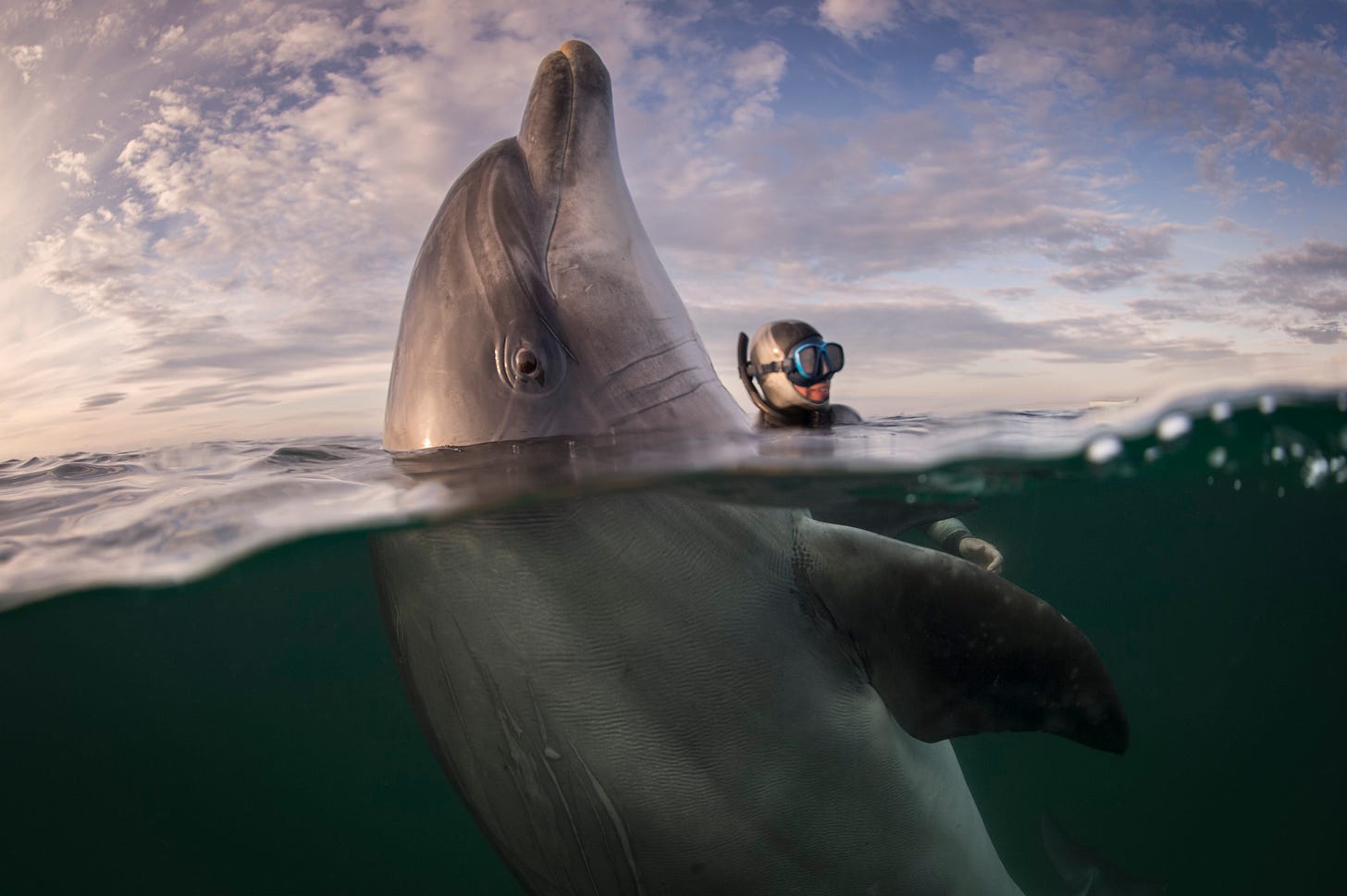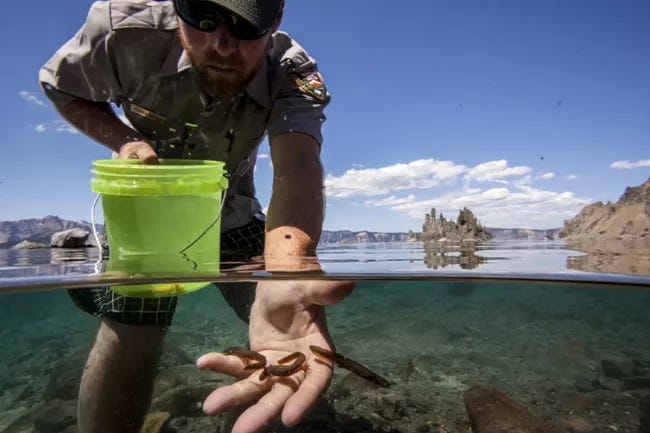AI to help us talk to dolphins?
And the first baby camels born in the Gobi's new breeding facility
By Dan Fletcher
Here is today’s audio edition!
I hope everyone had a great week — I traded muddy trails for dry desert and hit the road for a week of cycling down in Moab. No wildlife encounters to report, just some sore quads from crawling up the slick rock.
We’re back to regularly scheduled programming this week, with some news from Google and Georgia Tech that brings hope that the cross-species communication might be possible for the first time. (Maybe.)
Are We About to Talk to Dolphins?
Imagine a world where we could understand what dolphins are saying. Not just vague interpretations, but actual communication. Google is betting that artificial intelligence might be the key to bridging the communication gap between humans and these marine mammals.
This month, Google announced DolphinGemma, a groundbreaking large language model (LLM) designed to decode dolphin vocalizations. If you've heard about ChatGPT or Claude, you'll recognize the basic concept: just like those AI tools can understand and generate human language by analyzing massive amounts of text, DolphinGemma does the same thing, but with dolphin sounds. Think of it like a super-sophisticated pattern recognition system that can learn the "grammar" and "vocabulary" of dolphin communication.
Developed in collaboration with the Wild Dolphin Project and Georgia Tech, the project aims to unravel the complex communication system of Atlantic spotted dolphins by processing thousands of hours of underwater recordings. It's essentially teaching an AI to listen and potentially "speak" dolphin, breaking down their clicks, whistles, and burst pulses into something that might resemble a language.
Dr. Denise Herzing, founder of the Wild Dolphin Project, sees this as more than just a scientific curiosity. "Maybe [understanding them] would make us connect differently—and realize that these species have the right to a healthy existence," she told Scientific American.
The technology builds on decades of research. The Wild Dolphin Project has been studying a specific community of Atlantic spotted dolphins in the Bahamas since 1985, meticulously documenting their clicks, whistles, and burst pulses. These aren't just random sounds – dolphins use signature whistles that act like names, with mothers and calves using unique calls to reunite.
But not everyone is convinced we're on the brink of a dolphin-human conversation. Zoologist Arik Kershenbaum cautions that we shouldn't get ahead of ourselves. "Language is infinitely complex," he notes. "If you have a separate word for every object in your environment, that's not a language."
The current approach is more nuanced. Researchers plan to use a technology called CHAT (cetacean hearing augmented telemetry) to experiment with novel vocalizations. The goal isn't immediate translation, but to explore how dolphins might respond to AI-generated sounds associated with specific objects.
Computer scientist Thad Starner from Georgia Tech was particularly excited about early results. When first hearing the AI-generated dolphin-like sounds, he told Scientific American he was "dancing around the room" – especially after successfully reproducing burst pulses that had previously eluded conventional computer programs.
If it works, the project offers a tantalizing chance to get answers about animal cognition and communication. As Herzing wonders, could understanding dolphins fundamentally change how we view these intelligent marine mammals?
Stay tuned – the conversation is just beginning.
Field reports! ⛺
Right before break, I introduced you to the rare and endangered wild camels, and a group of researchers and filmmakers working to bring them back from the brink.
Dr. Kah-Wai Lin just got back from the Gobi desert this weekend, where he got some remarkable footage of the first new camels born at the Toli Bulag Wild Camel Breeding Center, which just opened in September. They’re working hard to build facilities and reliable water access at the breeding center so it can be staffed more reliably, but this birth is already a huge win for this small team.
Quick links! 🔗
Last week, researchers captured the first deep-sea footage of a colossal squid off the coast of the South Sandwich Islands. It is looks more otherworldly than big to me, but it’s tough to get a sense of scale in the water. Scientists also suspect it is a juvenile — full-grown specimens can grow up to 23 feet in size.
And another addition to the conservation lawsuits pending against the Trump administration — the Center for Biological Diversity launched a lawsuit in defense of the Crater Lake (or Mazama) newt, a sub-species of newt which only exists inside the iconic Oregon lake and is under threat from introduced crayfish. To be fair, the Center has been lobbying for the newt even in the days of the Biden administration, attempting to secure its placement on the endangered species list. But this latest salvo comes in part because budget cuts will make it even harder to ensure the newt’s protection.
See you Wednesday!






